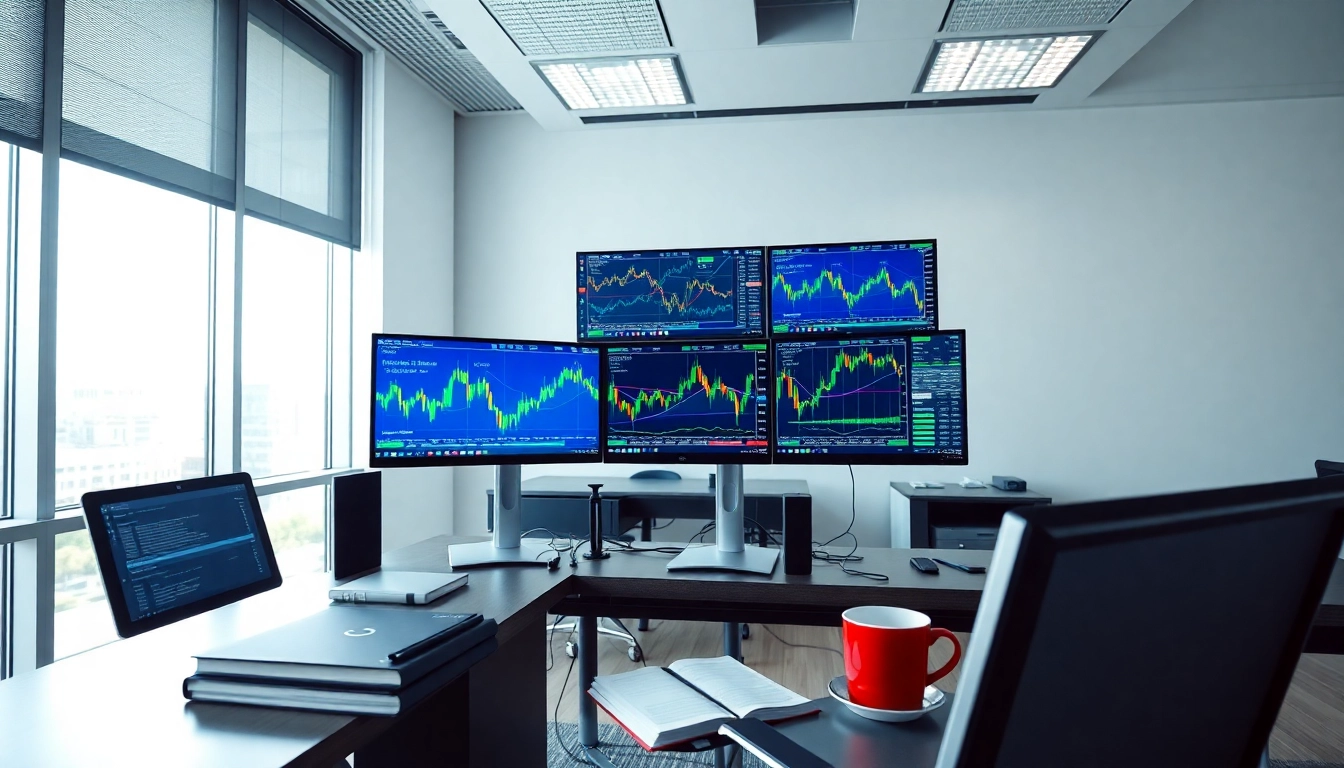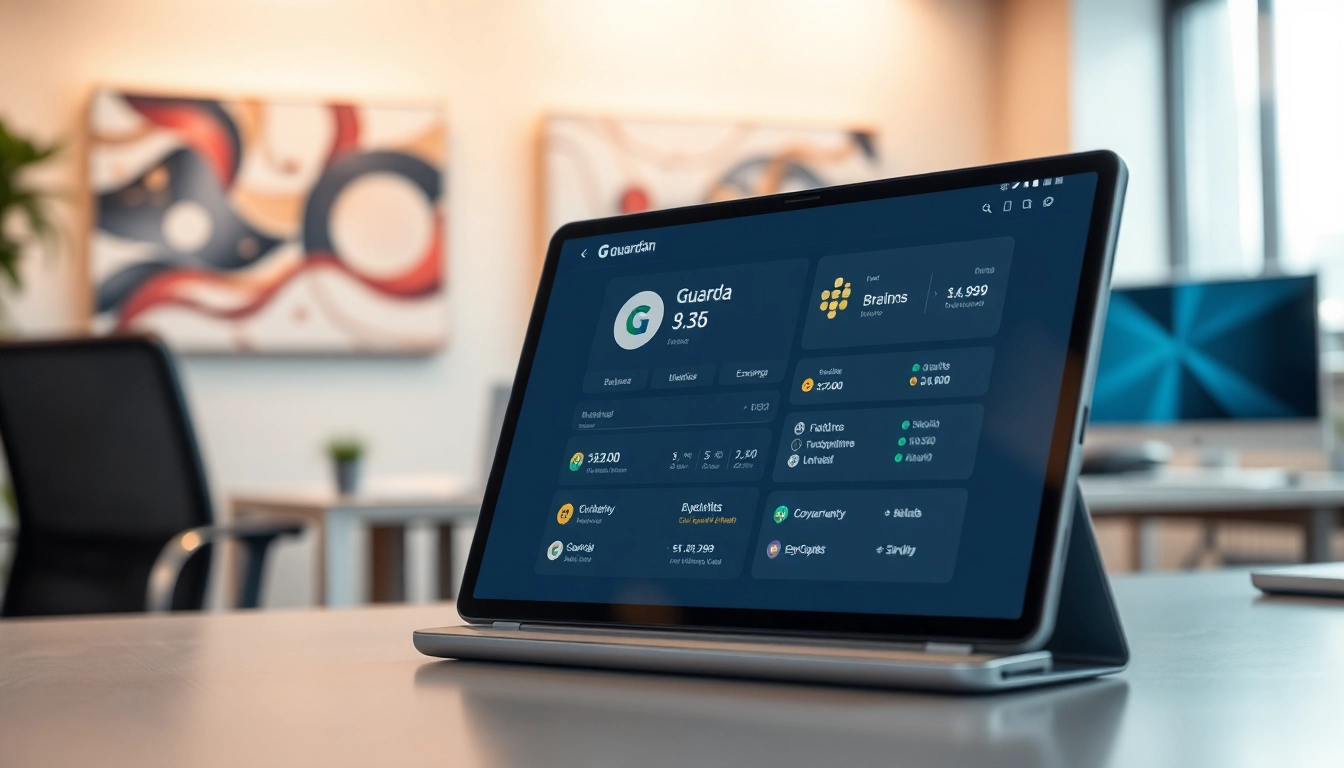Understanding the Basics of Forex
What is Forex Trading?
The term Forex, short for foreign exchange, refers to the global marketplace for trading national currencies against one another. It is the largest financial market in the world, boasting a daily trading volume surpassing $6 trillion. Forex Trading is essentially the process of buying one currency while simultaneously selling another, enabling the conversion of currency values based on current exchange rates.
Forex trading is not limited to banks and financial institutions; individual traders participate as well, drawn in by the market’s potential for profit and accessibility. The market operates continuously, 24 hours a day, five days a week, allowing traders to operate in different time zones and environments. This flexibility makes Forex particularly appealing to traders who require more versatility in their trading schedules.
How Forex Market Operates
The Forex market operates on a decentralized platform, which means it does not have a centralized exchange like the stock market. Instead, trading takes place over-the-counter (OTC), facilitated by a network of banks, financial institutions, and individual traders. This structure allows for more fluidity in trading and price determination, influenced by supply and demand, market sentiment, geopolitical events, and economic indicators.
Currency pairs are the cornerstone of Forex trading, representing two different currencies. Pairs can be categorized as major, minor, or exotic, depending on their liquidity and trading volume. Major pairs involve the most traded currencies, such as the US dollar (USD) against the euro (EUR), while minor pairs might involve currencies like the British pound (GBP) against the Australian dollar (AUD).
Terminology in Forex Trading
To navigate the Forex market effectively, one must become familiar with its specific terminology. Some essential terms include:
- Pip: The smallest price change in a currency pair, usually the fourth decimal place.
- Lot: The size of a trade. Standard lots consist of 100,000 units of the base currency.
- Margin: The funds required to open and maintain a leveraged position.
- Leverage: A mechanism allowing traders to control larger positions with a smaller amount of capital, amplifying potential gains and losses.
- Spread: The difference between the bid and ask price of a currency pair, often indicative of market liquidity and volatility.
Getting Started with Forex Trading
Choosing a Trading Platform
Selecting the right trading platform is crucial for your Forex trading journey. A robust platform will offer an intuitive user interface, a range of trading tools, and analytical features to help you make informed decisions. Popular platforms include Metatrader 4 (MT4) and Metatrader 5 (MT5), which provide access to real-time market data, automated trading capabilities, and customizable charts.
When assessing platforms, consider the following criteria:
- Regulation: Ensure the platform is regulated by a reputable authority to safeguard your funds.
- Execution Speed: Fast execution is critical in Forex trading as market conditions can change rapidly.
- Trading Tools: Look for platforms that offer advanced charting tools, technical indicators, and analytical options.
- Customer Support: Efficient customer support can greatly enhance your trading experience, especially for troubleshooting and queries.
Setting Up Your Trading Account
Once you’ve selected a trading platform, the next step is to set up your trading account. Brokers typically offer different account types, including standard, mini, and managed accounts, each with varying benefits and risks. When opening an account, you will need to submit personal information, financial, and identification documents to comply with regulatory standards.
Consider starting with a demo account if you’re new to Forex trading. This allows you to practice trading with virtual funds, gaining hands-on experience without the risk of losing real money. Additionally, observe how different strategies play out in various market conditions while familiarizing yourself with the platform’s features.
Understanding Currency Pairs
Currency pairs are fundamental in Forex trading. Understanding how to read them is essential for success. A currency pair consists of two currencies, where the first currency is called the base currency and the second is the quote currency. The value of the pair indicates how much of the quote currency is needed to purchase one unit of the base currency.
Traders primarily use four types of currency pairs:
- Major Pairs: Include the most commonly traded currencies; they usually involve the USD paired with other significant currencies like the EUR, JPY, and GBP.
- Minor Pairs: Do not include the USD but consist of other major currencies, such as EUR/GBP.
- Exotic Pairs: Feature a major currency paired with a currency from a developing economy, such as USD/TRY (Turkish Lira).
- Cross Pairs: Include two major currencies not involving the USD, such as EUR/JPY.
Developing Effective Forex Trading Strategies
Technical Analysis Techniques
Technical analysis is a cornerstone of Forex trading, focusing on chart patterns and indicators to forecast future price movements. Traders utilize various tools, including:
- Charts: Line, bar, and candlestick charts provide visual representation of price actions over time, helping traders identify trends and potential reversal points.
- Indicators: Tools like Moving Averages, Relative Strength Index (RSI), and Bollinger Bands help assess market conditions, momentum, and volatility. Using these indicators can enhance your decision-making process.
- Chart Patterns: Patterns such as head and shoulders, triangles, and flags can signal potential breakout points, helping traders determine entry and exit strategies.
Fundamental Analysis in Forex
While technical analysis focuses on price charts, fundamental analysis examines economic indicators, geopolitical events, and news that affect currency values. This approach requires an understanding of:
- Economic Indicators: Reports such as GDP, employment rates, inflation, and central bank interest rates can provide valuable insights into a currency’s strength.
- Political Events: Elections, policy changes, and geopolitical tensions can lead to volatility in currency markets. Staying informed through reputable news sources can help you better anticipate market reactions.
Risk Management Strategies
Emphasizing risk management is vital in Forex trading. Traders must implement strategies to mitigate potential losses, including:
- Stop-Loss Orders: A stop-loss order automatically closes a trade at a predetermined level to limit losses, ensuring that emotional decision-making does not lead to larger losses.
- Position Sizing: Properly managing the size of your trades based on account balance and risk tolerance can prevent significant losses. Many traders advise risking no more than 1-2% of account equity on a single trade.
- Diversification: Spread your investments across various currency pairs to minimize exposure to any single asset’s volatility.
Advanced Forex Trading Techniques
Leveraging Forex Signals
Forex signals are trade ideas or recommendations generated based on market analysis, either through human experts or automated algorithms. They can guide traders on when to enter or exit a position based on specific criteria. When leveraging Forex signals, consider the following:
- Transparency: Choose signal services that provide performance statistics to assess reliability and success rates.
- Timeframe: Signals can vary based on trading style; ensure the signals match your trading approach, whether day trading or swing trading.
Using Automated Trading Systems
Automated trading systems, often known as algorithmic trading, leverage computer programs to trade based on predetermined criteria. This method can minimize emotional trading and enable backtesting of strategies over historical data. When implementing automated trading systems, keep the following points in mind:
- Programming: Understand the mechanics behind the automated strategies to ensure they align with your trading philosophy.
- Monitoring: While automated trading can generate trades in your absence, regular monitoring is necessary to adjust strategies based on changing market conditions.
Managing Your Trading Psychology
Psychology plays a crucial role in trading performance. Successful Forex traders cultivate a disciplined mindset, managing emotions and avoiding impulsive decisions. Key practices to enhance trading psychology include:
- Establishing Clear Goals: Set realistic and achievable trading goals to maintain motivation while managing expectations.
- Journaling: Keep a trading journal to document your trades, strategies, and emotions. Analyzing past trades can help you recognize patterns in behavior that may affect performance.
- Mindfulness Techniques: Practicing mindfulness and adopting stress management techniques can alleviate anxiety, enabling more rational decision-making during trading hours.
Evaluating Your Forex Trading Performance
Tracking Your Trades
Regularly tracking your trades is fundamental for assessing your performance and improving your strategies. Use a comprehensive trading journal that records details such as entry and exit points, trade size, strategies employed, and outcomes. This allows you to analyze factors contributing to wins or losses, fostering continual improvement in your trading practices.
Metrics to Measure Success
To evaluate your trading performance, consider key metrics, including:
- Win Rate: The percentage of profitable trades relative to total trades executed. This metric helps gauge the effectiveness of your strategies.
- Risk-to-Reward Ratio: The ratio of potential profit on a trade compared to potential loss. A favorable ratio often indicates a more strategic approach to trading.
- Drawdown: The measure of peak-to-trough decline in your account balance. Monitoring drawdown helps you maintain realistic expectations during losing streaks.
Continuous Learning and Improvement
The Forex market is dynamic, requiring effective traders to remain adaptable and continuously updated. Engage in ongoing education through various means, such as online courses, webinars, and trading communities. Collaborating with fellow traders can provide new perspectives and foster shared insights into market behavior. Always seek to refine your strategies based on new data, market conditions, and innovative techniques to maintain a competitive edge in the trading landscape.















Leave a Reply